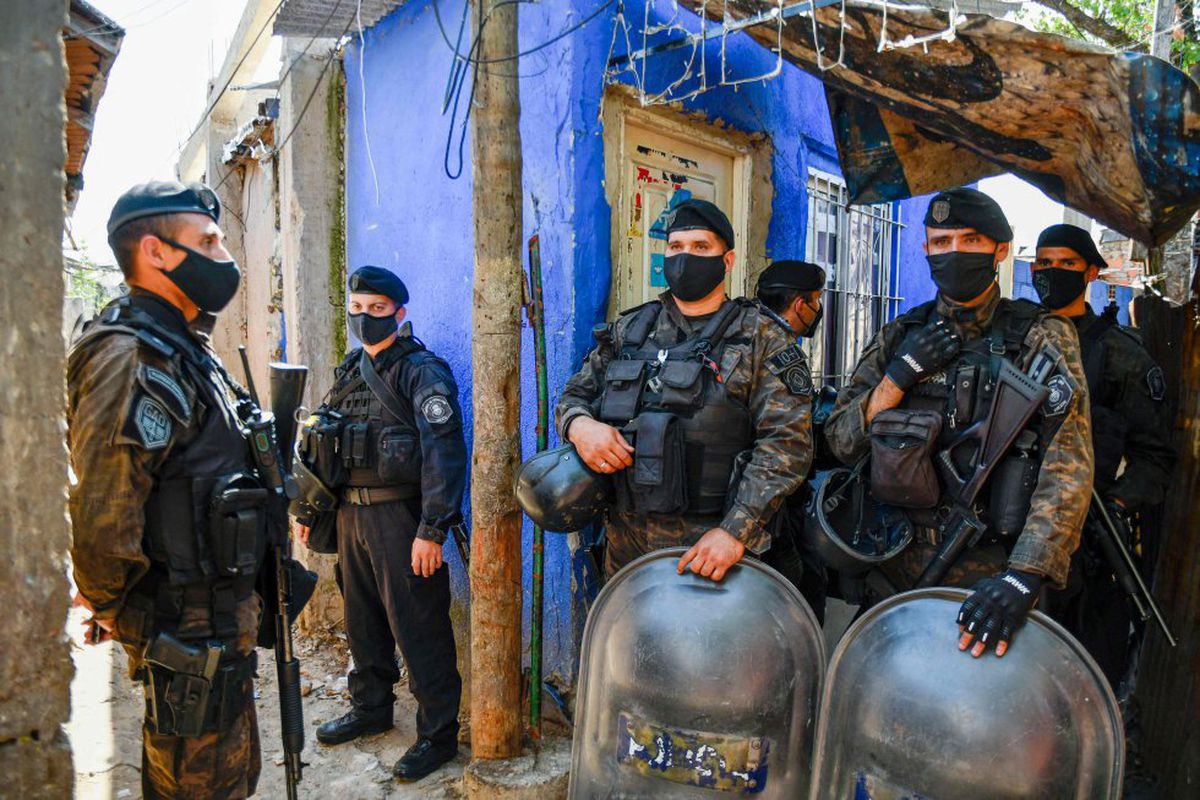A police operation in the Puerta 8 neighborhood, on the outskirts of Buenos Aires, in February 2022.ELIANA OBREGON (AFP)
On the afternoon of Wednesday, February 2, 2022, the Minister of Security of the province of Buenos Aires issued a warning: "Those who bought drugs in the last 24 hours have to discard them."
Sergio Berni then warned that a “high level of toxicity” drug was circulating on the outskirts of the capital that ended up killing 24 people that week and taking more than 80 to the hospital.
The cocaine that caused the deaths, authorities discovered nearly a week later, had been laced with carfentanil, a painkiller used on elephants that can kill people just by coming into contact with skin.
One year after the tragedy, the presence of the drug in the country remains a mystery, and all the suspects arrested during those days have been separated from the investigation.
Most of the fatal doses were traced to the informal settlement of Puerta 8, a neighborhood on the western outskirts of the city of Buenos Aires that concentrates two of the most common ills in the impoverished surroundings of the Argentine capital: drug dealing and overcrowding. of informal and precarious workers.
That same Wednesday, five people were arrested and ended up accused of the deaths.
The charges against them on March 9, homicide "aggravated by the use of poison as an insidious method," were dismissed on October 25 by a federal court.
According to the decision of the Federal Chamber of San Martín, "it was not demonstrated that the defendants knew that the marketed drug contained the lethal substance carfentanil."
The court could not prove that four of the defendants had intervened "in the cut of cocaine with that substance", but prosecuted them for drug trafficking.
One of them was removed from the cause after a psychiatric analysis that determined that he had a "moderate intellectual disability, associated with a psychoactive substance use disorder."
According to the court's resolution, drug use prevented her from understanding his involvement in the investigation.
Joaquín El Paisa Aquino was arrested a day later.
Accused of leading a drug gang on the western outskirts of Buenos Aires, El Paisa, 33, was arrested as a prime suspect in distributing the deadly cocaine.
He had been a fugitive for a year and a half from a four-year sentence and the 5,000 doses seized at his house were packed in the same pink nylon as the samples delivered by relatives of the victims.
On February 22, when carfentanil had already been identified in cocaine, authorities determined that the doses found during his arrest did not match those that had killed 24 people.
Aquino has been released from the case, but remains under arrest and Argentina hopes to extradite him to his home country of Paraguay when he finishes his pending sentences.
According to the police, El Paisa followed orders from the historic drug trafficker Miguel Ángel Mameluco Villalba, who built his empire from one of the capitals of western Buenos Aires, the city of San Martín.
Villalba has been serving a 27-year sentence since 2019 and has his eldest son, Iván El Salvaje, imprisoned for two murders.
The investigation now points to the fact that both, from prison, lead the gang responsible for the carfentanil in cocaine.
The theory is based on an intervention made by the Justice on the telephone that Mameluco keeps in prison.
According to the same ruling that separated the five drug dealers from the investigation, the Villalba gang knew about the effects of the "novel composition of alkaloids" because they tested it on two close people who ended up in the hospital.
The ruling also raises a possible line of investigation on the arrival of carfentanil in Argentina and states that "it is plausible to conjecture" that it was intended to "introduce a novel combination of drugs into the illicit market under the pretext of expanding the offer in the field of consumption" .
According to various local media, the Villalba have not yet been formally involved in the case, but news is expected this month.
The courts have returned to their activity this Wednesday after the January holidays.
While the investigation into the possible culprits resumes its course, the presence of carfentanil is still a mystery.
Unknown in Argentina, the ravages of the powerful opiate that is used to put animals such as elephants, bears or rhinos to sleep, is already wreaking havoc in the United States: according to the Drug Enforcement Administration (DEA), drug traffickers could use it to make the heroin more potent.
Fentanyl, a synthetic opioid that is 100 times less powerful than carfentanil but 50 times more serious than heroin, is an epidemic in the United States.
Deaths from its use went from 58,000 in 2020 to 71,200 a year later.
Subscribe here to the EL PAÍS America
newsletter
and receive all the latest news from the region

